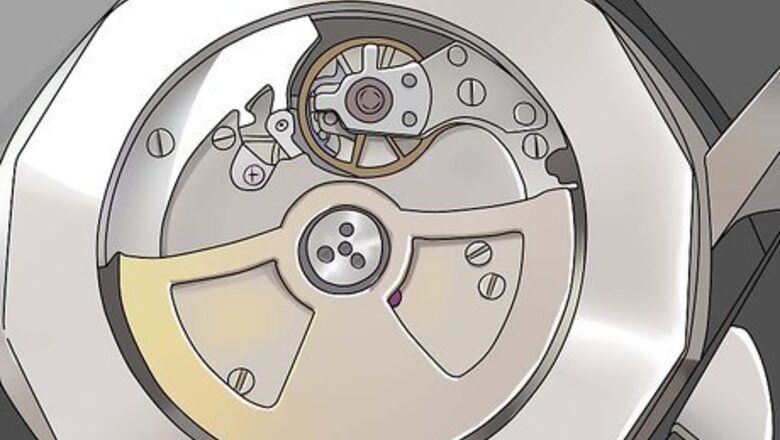
views
X
Research source
but for those made in later years, the date can usually be identified through the use of a special code. Certain stylistic elements common to each decade can also help you date the watch.
Checking the Date Code
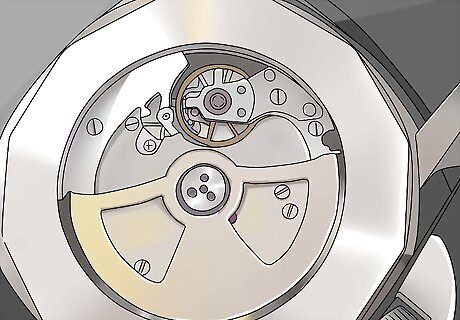
Locate the date code. Genuine Bulova watches manufactured between 1924 and 2009 should all have an imprinted date code marked somewhere on the watch. Once you locate and identify the date code, you should know the year during which that watch was manufactured. Bulova watches made between 1924 and 1949 are marked with a date code symbol. These symbols are typically located on the inside movement of the watch, so you or a professional jeweler will need to open the watch to locate the code. Bulova watches made between 1950 and 2009 are marked with a two-digit alpha-numeric date code. This code is typically found on the outside backcase of the watch, just below the serial number. Opening the watch should not be necessary. Note that these codes only specify the manufacture date of the watch. It is possible that the watch did not go into circulation until a later date, but there is no way of identifying the exact year a specific watch went on the market. Also note that many Bulova watches also have a serial number listed on the backcase, but this number cannot be used to date the watch and only served as a method of identification.
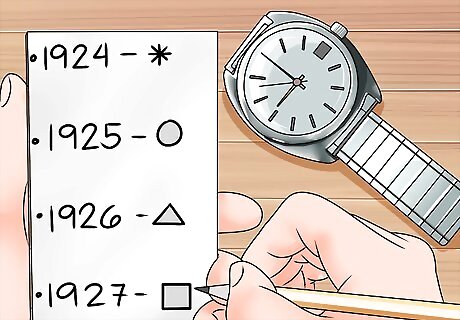
Match the symbol for pre-1950 watches. If there is no alpha-numeric code on the backcase of the watch, it probably dates back further than 1950. You will need to check the inside movement of the watch for a pictorial date symbol to identify the manufacture date. Note that some dates share symbols with other years. When in doubt, you should cross-check the date symbol with the watch style to determine which era the watch likely fell into. The date symbols are as follows: 1924: asterisk (same as 1941) 1925: circle (same as 1934, 1944) 1926: triangle (same as 1935, 1945) 1927: square (same as 1936, 1946) 1928: crescent moon (same as 1938) 1929: rounded shield (same as 1939) 1930: horned circle (same as 1940) 1931: rectangular shield 1932: rounded capital T (same as 1942) 1933: capital X (same as 1943) 1934: circle (same as 1925, 1944) 1935: triangle (same as 1926, 1945) 1936: square (same as 1927, 1946) 1937: right-pointing arrow 1938: crescent moon (same as 1928) 1939: rounded shield (same as 1929) 1940: horned circle (same as 1930) 1941: asterisk (same as 1924) 1942: rounded capital T (same as 1932) 1943: capital X (same as 1933) 1944: circle (same as 1925, 1934) 1945: triangle (same as 1926, 1935) 1946: square (same as 1927, 1936) 1947: 47 1948: 48 1949: J9
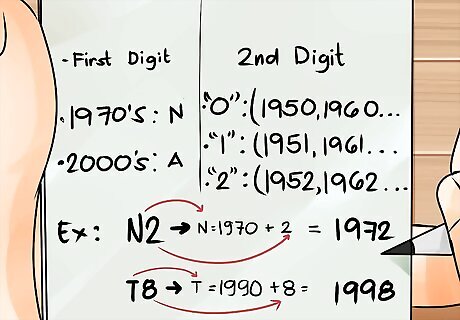
Translate the code for post-1950 watches. For Bulova watches created in 1950 or later, the manufacturer switched to a two-digit alpha-numeric code system. These codes are usually found on the backcase, but some can be found on the inside movement near the set-screw. The first digit of the code corresponds to the decade. The second digit of the code corresponds to the specific year. The decade codes are as follows: 1950s: L 1960s: M 1970s: N 1980s: P 1990s: T 2000s: A The second digit of the code matches the ending digit of the year in which the watch was manufactured. When "0" is used, the end of the year was a "0" (1950, 1960, 1970, and so on). When "1" is used, the end date of the year was a "1" (1951, 1961, 1971, and so on). This pattern continues for digits "0" through "9." For example, a Bulova watch marked with "N2" was manufactured in 1972. A Bulova watch marked with "T8" was manufactured in 1998.
Examining the Style and Appearance

Understand when and how to use appearance for dating. Since Bulova watches are marked with date codes, you won't usually need to rely on the watch appearance for dating purposes. There are some circumstances that make this a beneficial practice to know, however. For example, if the date code has worn away or is otherwise obscured, your next best option is to date the watch by appearance. An understanding of watch styles can also help you narrow down a date for pre-1950 Bulova watches. Some of the date symbols used for these watches were shared with watches of other decades. For instance, the asterisk marked watches manufactured in both 1924 and 1941. Knowing the difference between a 1920s style watch and a 1940s style watch can help you determine which date (1924 or 1941) an asterisk-marked Bulova was made in. Note that dating a watch by style will only tell you the decade the watch likely came from, not the exact year.
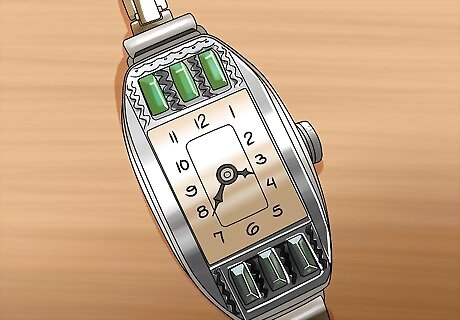
Identify key 1920s elements. Most Bulova watches from the 1920s feature a "deco" style common to other fashions and decorations of the decade. The hands of the watch are usually thick. Look at the style of the watch face. The sides and front of the metal will usually be decorated with engraved patterns.
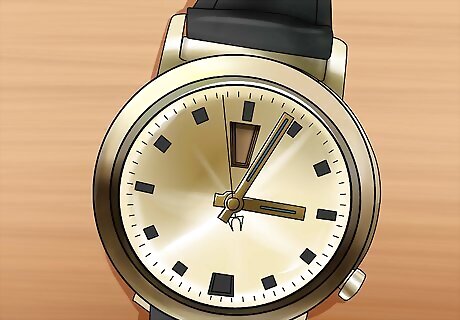
Look for markings of 1930s style. Watches of the 1930s were smoother and more elegant than those of the previous decade. The lines of the watch are generally fairly clean. Watch faces no longer had much engraving on them, and when engravings were used, they were minimal. Square watch faces came into fashion during the 1930s. Rounded faces were still common, especially early in the era, but rectangular faces were more prevalent in the later part of the decade. Watches in general had a more straightforward, "masculine" appearance during this decade.
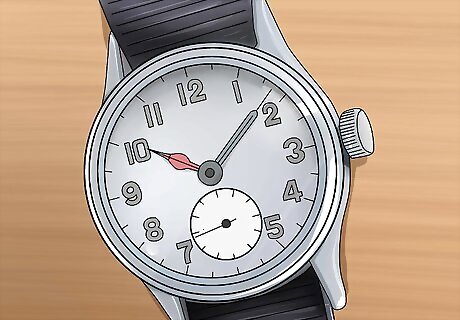
Date a watch made in the 1940s. Watches made in the 1940s were very similar to those made in the late 1930s, but the designs were even more rigid. The lines and angles were much more rigid, with very few rounded edges. Rectangular watch faces were common, while rounded faces were fairly rare. Watch faces were small, but the designs were bold and blocky. The hour markers were quite simple, though.
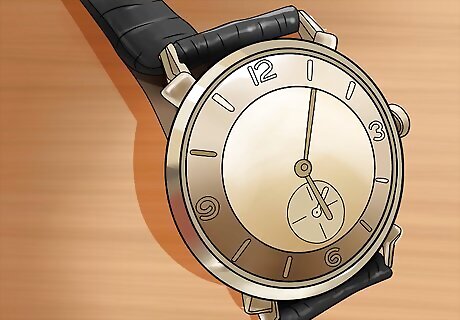
Know which style elements were common to the 1950s. Watches manufactured during the 1950s were more decorative than in the previous two decades. This decade marked an era of technological and scientific advancements, and this trend shows up in most watch styles of the decade. Many watches took on what would have been a "futuristic" appearance. Bold, fancy watch faces were back in style. The numbers and hour markers became elaborate again, and the metal surrounding the watch face was often curved or angled in a decorative, rather than straightforward, manner. Rectangular faces were still common, but rounded faces came back into style again.
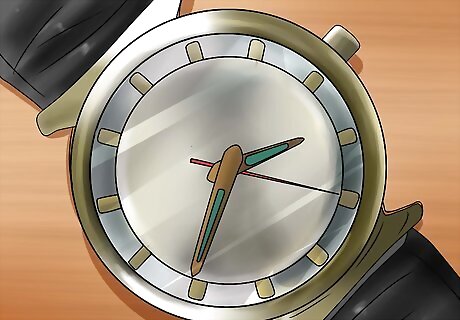
Note 1960s style elements. During the 1960s, watches were bolder and took on an appearance inspired by the modern art era. Most watch faces were round and notably larger than in past decades. The metal surrounding the face was usually quite thin and simple. The hands of the watch were usually wider, yet they also came to a sharper, more defined point.
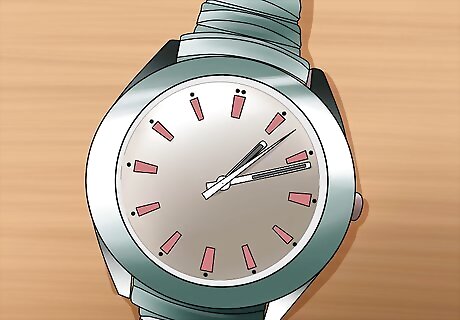
Consider key markings from the 1970s. In thee 1970s, watches were heavy, big, and fairly flashy. Square faces were back in style. The metal surrounding the watch face was simple yet heavy and blocky. Hour digits were somewhat rare, and most watches marked the hours exclusively with lines or dashes. Metal bands were more common than ones made of leather.

Consider an expert appraisal for watches past the 1980s. Many watch styles from the 1980s and beyond were quite varied, making it difficult to pinpoint a specific style to a specific decade. If you suspect that your Bulova watch originated during one of these decades, you may need to turn to an expert jeweler or appraiser for a more exact idea of the likely date. That being said, there were still a few key design elements were noting from each decade. During the 1980s, metal watch bands and simple hour marking were in style. In the 1990s, decorative leather bands and hour digits came back into fashion, but metal bands and plain hour markings were also common enough. Once the 2000s hit, watches of nearly all previous style eras could be found on the market.













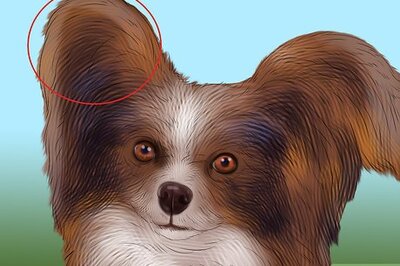



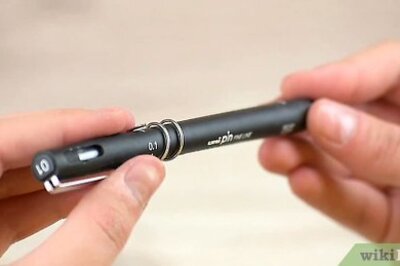
Comments
0 comment